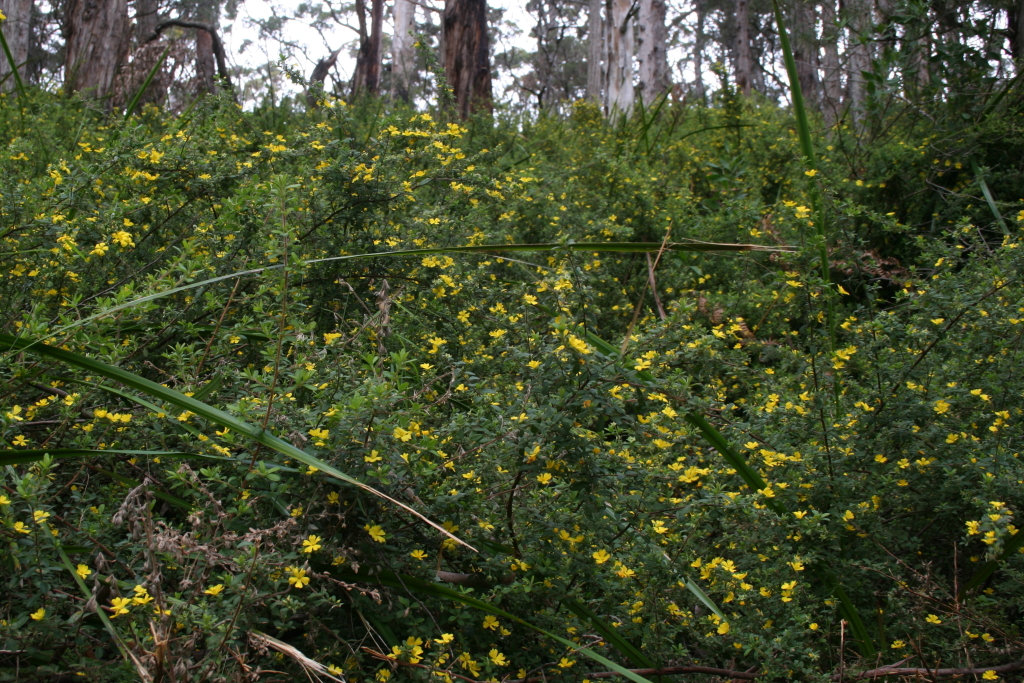Hibbertia aspera subsp. aspera
Spreading to decumbent shrubs to 70 cm high; branches tomentose. Vestiture of few tubercle-based simple hairs over stellate hairs with many spreading branches. Leaves obovate to oblanceolate, 5–13(–19) mm long, 2–5.5(–7.4) mm wide, ± uniformly stellate-pubescent to tomentose; petiole 0–0.8 mm long; apex rounded to obtuse or emarginate; margins narrow, revolute, distant from scarcely raised central vein. Flowers on peduncles (1.6–)2–5(–7.4) mm long, terminal on short branches, often in clusters of 2–3 flowers, or solitary, subtended by 1 linear bract 1.2–1.5(–1.8) mm long, one-third to two-thirds the length of the sepals; sepals (2.7–)3.2–4(–4.2) mm long, unequal, mainly stellate-pubescent; petals obolanceolate to almost obtriangular, (3–)3.4–5(–6.2) mm long, papillose, yellow; stamens (2–)4–6(–9); filaments connate for at least half their length; carpels 2, villous, rarely tomentose. Flowers Sep.–Dec.
GipP, EGL, EGU, HSF. Also Qld, NSW. Locally common in near-coastal heath, woodland or open-forest in Gippsland (east of Western Port), usually on well-drained, gravelly or sandy soils.
Two subspecies recognised, one in Victoria. Hibberttia aspera subsp. pilosifolia and putative hybrids with H. empetrifolia occur in northern New South Wales and Queensland. Subspecies pilosifolia is distinguished by its softly hairy leaves that have long, erect stellate hairs with only 1–3 branches.
Previously considered a species complex with H. empetrifolia. Numerous species are now described. See notes under H. hirticalyx, H. notabilis, H. pallidiflora, and H. truncata.
 Spinning
Spinning

